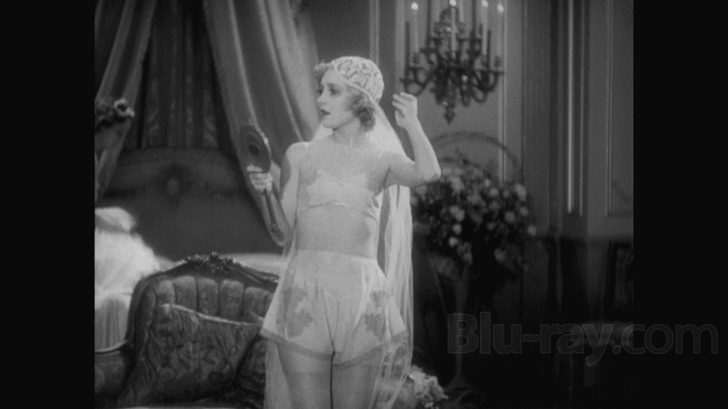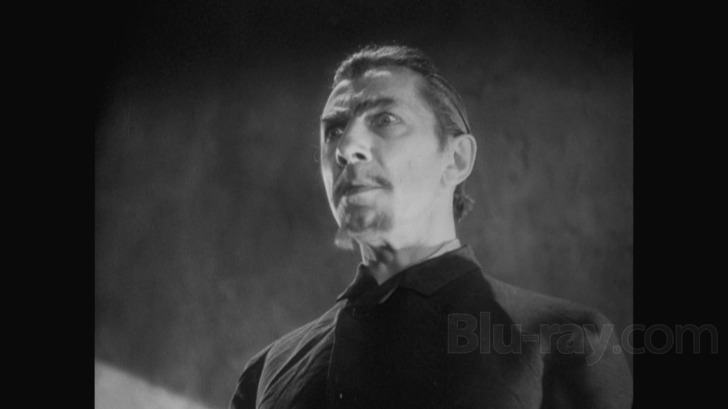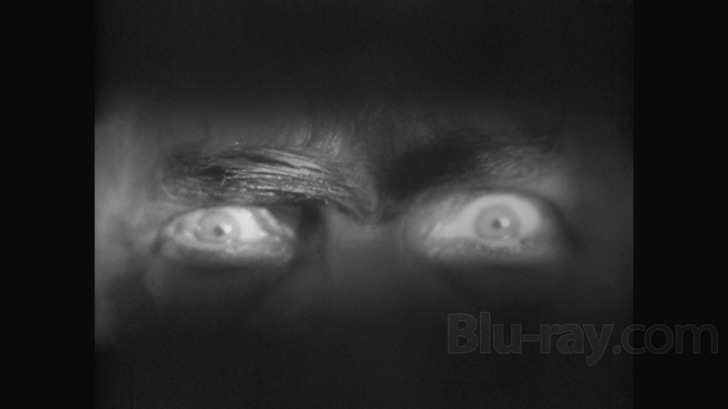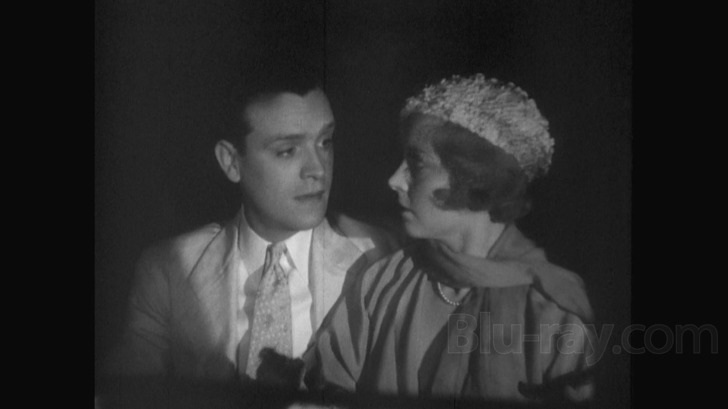White Zombie Blu-ray Movie
HomeWhite Zombie Blu-ray Movie 
Cary Roan Special Signature EditionVCI | 1932 | 67 min | Not rated | May 06, 2014
Movie rating
6.5 | / 10 |
Blu-ray rating
| Users | 0.0 | |
| Reviewer | 3.5 | |
| Overall | 3.5 |
Overview
White Zombie (1932)
While traveling to New York, the young couple Madeleine Short Parker and her fiancé Neil Parker are convinced by their new acquaintance Charles Beaumont to stay in Port Prince and get married in his mansion. However, Beaumont felt in love for Madeleine and his real intention is to convince her to call off the wedding. When he realizes that the time is too short to seduce her, he visits the local warlock Legendre (Bela Lugosi) , who gives him a drug to transform Madeleine into a zombie. She dies immediately after the wedding, and her corpse is disputed by Beaumont and his sick love for her; Legendre, that wants her for his team of zombies; and Neil, who is convinced by the local missionary Dr. Bruner that she might be alive. In the end, true love wins...?
Starring: Bela Lugosi, Madge Bellamy, Joseph Cawthorn, Robert Frazer, John HarronDirector: Victor Halperin
| Horror | 100% |
Specifications
Video
Video codec: MPEG-2
Video resolution: 1080p
Aspect ratio: 1.32:1
Original aspect ratio: 1.37:1
Audio
English: LPCM 2.0
Subtitles
English
Discs
25GB Blu-ray Disc
Single disc (1 BD)
Playback
Region A (B, C untested)
Review
Rating summary
| Movie | 3.5 | |
| Video | 3.5 | |
| Audio | 3.5 | |
| Extras | 2.0 | |
| Overall | 3.5 |
White Zombie Blu-ray Movie Review
Black magic.
Reviewed by Jeffrey Kauffman May 9, 2014The early thirties were awash in horror films that seemed to spring from some almost atavistic fears, fears that may have only been exaggerated by the trials of that era, including the Great Depression. From the stealthy midnight appearance of Dracula in February 1931 through the bastard twin terrors of Frankenstein (which debuted in November 1931) and Dr. Jekyll and Mr. Hyde (which premiered a month later) and on to the December 1932 unwrapping of The Mummy, the film world in barely two years managed to give birth to virtually all of the main monsters which would continue to haunt it seemingly for all time. (Hollywood wouldn’t venture into werewolf territory until 1935’s Werewolf of London.) A mere 24 months gave cinema lovers vampires, a Victorian era transformer, a reanimated monster and one of the walking dead, four of the most durable horror concepts. Some may be wondering about another kind of walking dead—namely the zombie. Lost in the shuffle of the above mentioned major studio outings was a smaller independent feature that has built up a sizable cult following through the years. About halfway between Mr. Hyde’s rampages and the Mummy’s shuffling off to Cairo, White Zombie appeared in June 1932. While this was by most measures an independent production, it was shot at Universal and starred Universal’s iconic Dracula, Bela Lugosi. White Zombie is typically credited with being the first feature length zombie film, and according to some, it actually helped introduce the very term “zombie” into the American patois. Its strongest adherents feel that White Zombie is an unappreciated (or at least underappreciated) masterpiece, while others have had bones to pick both with the somewhat jumbled narrative style and the stilted acting. There’s little doubt that White Zombie weaves its own quasi-hallucinatory spell, one that is actually quite a bit different from some of the Universal features. There’s an almost rational feeling to the iconic Universal horror films, despite their nightmarish underpinnings. White Zombie by contrast plays almost like a fever dream, a drug induced mirage that may not ultimately make a lot of sense but which has some kind of indefinable imprint on the psyche.

Zombies were not the media darlings they are today back in the early thirties, which is one reason it’s all the more surprising that White Zombie comes replete with many nascent tropes that later became associated with the genre. Based on journalist William Seabrook’s 1929 tome The Magic Island, White Zombie purports to show the nefarious zombie infested climes of Haiti, and one of the film’s strongest elements is its kind of fetid atmosphere, one which seems both alluring and spooky. Young betrothed couple Neil Parker (John Harron) and his fiancée Madeleine Short (Madge Bellamy) make their way through a dank Haitian night in a horse drawn carriage, when they’re suddenly accosted by the grimacing visage of one “Murder” Legendre (Bela Lugosi), a frightening interchange that seems to throw both of the young folks for a loop, and which ends with Legendre procuring Madeleine’s silk scarf as a kind of souvenir.
Neil and Madeleine are being housed at the estate of local plantation owner Charles Beaumont (Robert Frazer), a magnate who has not just offered his tony digs for their wedding but has even arranged many of the details for the young couple. However, Beaumont has an ulterior motive—he is in fact interested in Madeleine himself, and he’s not above utilizing some of Legendre’s more—unorthodox methods to make her his own. The film toes a kind of middle ground in offering tantalizing hints about what kind of power Legendre has over his minions—it could be due to powerful native drugs that run rampant on the island, or it may indeed be something entirely supernatural. One way or the other, there’s little doubt that Legendre is empowered and that he has a bunch of blank eyed, shuffling acolytes who do his bidding without a second thought—and probably without a first thought, as well.
It’s definitely a drug that ends up afflicting Madeleine, for after Legendre surreptitiously gives a magic potion to Beaumont, he in turn gives it to Madeleine, whereupon she seemingly dies, leaving Neil despondent. Of course, Madeleine isn’t really dead—she’s just undead, but Beaumont finds she’s not entirely to his liking in her new zombiefied state. He begs Legendre to help him return Madeleine into something approaching her former state, but in the meantime (and in one of this film’s truly unique little sidebars), Legendre has set his sights on—Beaumont.
White Zombie is one of the more politically incorrect horror films of its time, one which presents at least one character in blackface and an outing which equates being black with all sorts of nefarious voodoo and scary ritual magic. But here the film also makes a kind of interesting statement that seems to have gone unrecognized by at least some who have pilloried the film for its outdated racial component: Legendre has usurped the (literal) black magic for his own purposes, and as a result has ended up enslaving many native black Haitians himself. It’s a subtly shaded tale of imperialism run amok, with an all knowing white master subjugating a native population for his own evil means. This certainly doesn’t excuse the film’s excesses in this department, but it at least may offer a bit of slack cutting in terms of the more problematic elements.
The biggest problem afflicting White Zombie isn’t really its unsettling racial component, but more its combination of lurching narrative with extremely stilted acting, two deficits that materially detract from some actually stylish filmmaking, including elements like the repeated image of Lugosi's seemingly flammable eyes. However, Lugosi seems a bit off his mark in this film, unsure whether Legendre is merely another seductive Dracula type or something entirely different. Overriding all of the inherent issues with the film, though, is White Zombie’s completely unique mood. If films like Frankenstein were crafted to haunt one’s nightmares after viewing, White Zombie plays like a participatory nightmare itself, where the viewer is sucked into an alternate reality where even those still unaffected by zombieism seem to be wafting through some kind of feral dream.
White Zombie Blu-ray Movie, Video Quality 

White Zombie is presented on Blu-ray courtesy of VCI Entertainment with an MPEG-2 encoded 1080p transfer in
1.32:1. Probably the most salient question that will be on a lot of videophiles minds is, how does this stack up to the Kino release, which in turn presupposes
another question about which of the two versions on the Kino release we're talking about. For those unfamiliar with the
first Blu-ray release of this title, it had a default version which admittedly boasted excellent contrast and a very stable
image, but which had been denoised to within an inch of its life. Kino also provided a "raw" version as a supplement that
was unfiltered, but which was littered with noise and very badly damaged elements. I'd place this VCI release of Cary
Roan's restoration somewhere in the middle, with problematic elements which inherently come with their own issues
being dealt with in a generally smart manner. This release is plagued by consistent contrast and density issues which
provide a flickering appearance that will probably remind some of the "raw" version on the Kino release, but here the
image has been brightened and therefore defined considerably from the Kino version. While there has been obvious
digital cleanup here, there are still manifold issues of scratches (some of them quite large and long lasting), frame
misalignment and even a missing frame or two that mar the image. The more than apparent scratches and other damage
might imply that no actual over aggressive degraining may have taken place, but the image here does have a slightly
processed look that I suspect will be more noticeable on larger screens. This has obviously been cobbled together from a
variety of source elements, and that brings with it its own hazards. There are two really curious and disruptive
transitions at 37:09 and 37:16 in the scene between Neil and Dr. Bruner, to cite just one example. While blacks aren't
especially deep or convincing here, gray scale is effectively rendered most of the time. An anemic bitrate only exacerbates some of these
issues.
Note: I've tried to reproduce at least a few of the screenshots from the Kino version linked above so that readers
can do a side by side comparison.
Update: VCI has addressed the anemic bit rate mentioned above in a post on their Facebook page, indicating it was an error and will
be corrected. A toll free customer service number is included for those wishing to arrange for a corrected disc.
White Zombie Blu-ray Movie, Audio Quality 

There's better overall news with the soundtrack, presented in LPCM 2.0 Mono. While hiss is about as variable as contrast is in the video department, at times sounding like overpowering white noise and at other times like a distant seascape, aside from just a few miniscule dropouts, there's been good but not intrusive cleanup work done here. This has a slightly fuller lower midrange than the Kino version, something that helps keep it from sounding too tinny (though of course expectations need to be set realistically—this was, after all, still the dawn of the sound era). While there are still a number of pops, cracks and other signs of age and general wear and tear, nothing of any major import is lost and overall the track sounds fine if not outstanding.
White Zombie Blu-ray Movie, Special Features and Extras 

- Audio Commentary by Author Gary Don Rhodes. It's probably unavoidable that this commentary covers much the same ground as the one by Frank Thompson on the Kino Blu-ray release of White Zombie, but this is nonetheless a very interesting and informative listen. Rhodes is a bit more excitable in manner than Thompson, and tends to go off on tangents in the middle of sentences sometimes, but he gives a lot of background on the film, its source material and the various creatives involved in its production.
- White Zombie Theatrical Reissue Trailer (1080p; 2:44)
- Dracula (1931) Trailer (1080p; 1:47)
- Photo and Poster Gallery (1080p; 2:10) actually plays (with pans between images) rather than letting the viewer select the image, so have your pause button handy in case you want to look at something for a while.
White Zombie Blu-ray Movie, Overall Score and Recommendation 

This new VCI release of Cary Roan's restoration of White Zombie may not fully satisfy some, but it's a largely noble effort to combine some cleanup without completely destroying an organic appearance. Unfortunately, the elements here have so many issues that even heroic restorative measures probably couldn't ameliorate all of them, and that's exacerbated by some less than artful segues between them, as mentioned above. Some may question VCI's continued use of the older MPEG-2 compression codec, but there are no real compression artifacts to speak of in this release. There is a slightly processed look that may not be as bad as the worst examples of DNR "video" syndrome, but which still doesn't quite have the look of film at times. The bottom line is that the definitive White Zombie may not have appeared yet, and in fact may be unobtainable, given the dearth of original film elements available for this title. It may take someone on the order of Criterion to do the sort of painstakingly picayune work this title requires. This VCI release isn't perfect, but it's largely commendable, and comes Recommended.
Other editions
White Zombie: Other Editions
Similar titles
Similar titles you might also like

Frankenstein 4K
1931

The Black Sleep
1956

The Corpse Vanishes
1942

The Body Snatcher
1945

Night of the Living Dead 4K
Theatrical (UHD/BD) and Workprint (BD) versions
1968

Dracula
Includes "Drácula"
1931

Black Sabbath
AIP Cut | 60th Anniversary
1963

The Plague of the Zombies
1966

Black Sunday 4K
The Mask of Satan / La maschera del demonio 4K
1960

Scars of Dracula
1970

Dracula A.D. 1972
1972

The Old Dark House
1932

The Comedy of Terrors
1963

Zombie 4K
Zombi 2 / Zombie Flesh Eaters
1979

Let's Scare Jessica to Death 4K
Slipcover in Original Pressing
1971

Beyond the Darkness
Buio Omega
1979

Hatchet III
2013

Candy Corn
2019

Zombie Island Massacre
1984

Blood Ceremony
The Legend of Blood Castle | Standard Edition | Ceremonia sangrienta
1973



